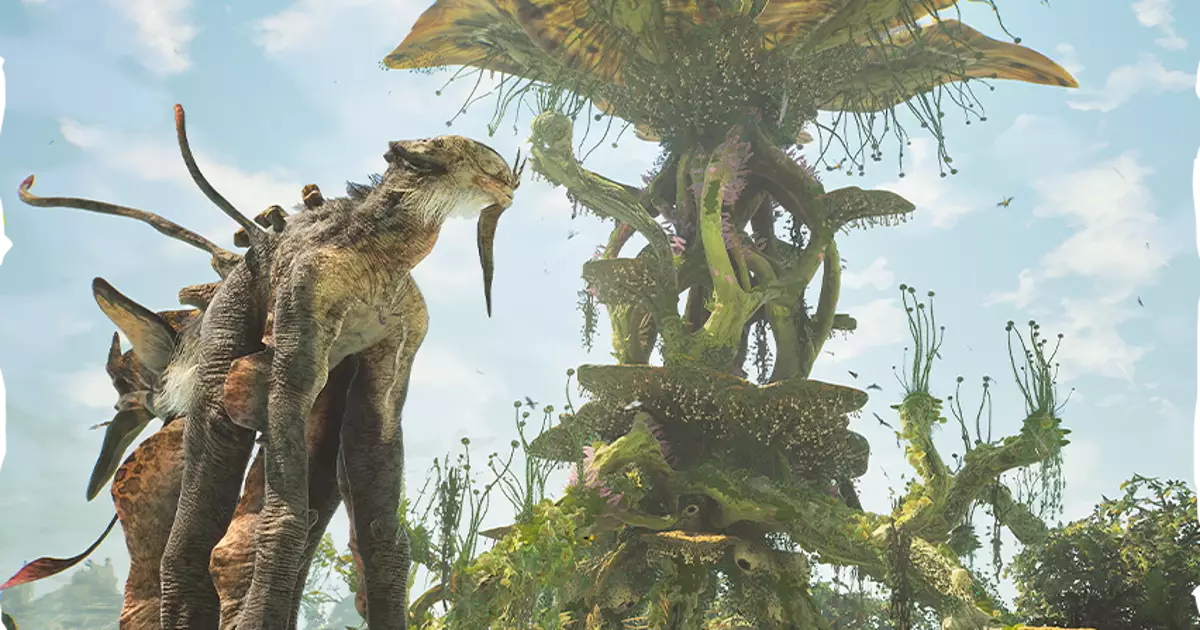The gaming industry often dances with imaginative worlds, yet the upcoming title from developers Dreamlit, Towers of Aghasba, appears to reach for something uniquely vibrant and ecologically conscious. Scheduled for release on November 19, 2024, this open-world experience invites players into a lush, equatorial wonderland inhabited by a plethora of fascinating creatures and culturally rich landscapes. However, while the visuals and premise evoke excitement, the underlying mechanics and depth of gameplay leave room for scrutiny. Can this enchanting world fulfill its ambitious promises, or could it merely be another survival game draped in environmental aesthetics?
At the core of Towers of Aghasba is the narrative premise of assuming the role of a junior architect for the Shimu tribe. This position suggests a focus on rebuilding and rejuvenating a devastated landscape, ravaged by an ominous force known as “the Withered.” Players will interact with local deities, establish vibrant villages, and cultivate massive trees, aiming to create a thriving ecosystem that will attract a variety of fantastical creatures. Herein lies the game’s intriguing dichotomy: are you simply a builder, or are you an ecologist striving to restore balance?
While the notion of engaging with the environment is commendable, there’s an undercurrent of skepticism about how substantial these mechanics will truly be. Will players be genuinely encouraged to understand the complexities of the ecosystem they inhabit, or will interpersonal biodiversity devolve into a repetitive grind of creature exploitation, leaving underlying ecological themes feeling perfunctory at best?
The Ecological Balance Between Nurturing and Destroying
One fascinating aspect of Towers of Aghasba is its dynamic ecosystem, which invites players to either nurture or eradicate its inhabitants. The existence of cute, pastel-colored dragons offers a tangible lure for eco-positivity—an invitation to form a non-violent relationship with the environment. The choice to nurture rather than slaughter these creatures presents a glimpse of a gaming alternative that can be both engaging and meaningful.
However, players can also engage in a more brutal form of interaction by taking on challenges from the Withered, who personify the darker, chaotic aspects of nature. The contrast between verdant jungles and the monochromatic domains of the Withered evokes a captivating visual and thematic difference reminiscent of darker atmospheres found in games like Ghost of Tsushima. Yet, as players oscillate between pacifist and aggressive play styles, one must ponder: does this superficial dichotomy add depth, or does it risk becoming a mere backdrop for traditional combat mechanics?
Combat and Crafting: The Heart of Gameplay Mechanism
Combat in Towers of Aghasba appears to embrace a familiar dynamic of real-time engagement, combining melee strikes with archery and evasive maneuvers. While this may satisfy players accustomed to action-driven gameplay, it also raises questions about the innovation within the genre. The game’s crafting system, while emerged, seems more like a peripheral feature rather than an integral gameplay component. Players can create weapons, armor, and potions, but if crafting lacks emphasis, will it feel impactful or merely serve as choreographed busy work?
Furthermore, the holographic building mechanics introduce a sense of convenience. While user-friendliness is a rightful pursuit, fans of construction and management genres may long for a more tangible building experience that emphasizes creativity without reliance on technological shortcuts. The disparity between the organic vibe of Aghasba’s sprawling vistas and the digital nature of holographic templates may hinder immersion, making elements clash rather than collaborate harmoniously.
A significant point of concern surrounding Towers of Aghasba lies in its portrayal of tribal themes and cultural motifs. The depiction of indigenous cultures within gaming often stirs controversy, especially when cultural references appear meager or lack appropriate representation. By presenting a stylized, almost cartoonish version of tribal traditions, Dreamlit risks trivializing the intricacies of authentic cultures, raising ethical questions about appropriation in the gaming milieu.
As we await the official release of Towers of Aghasba, excitement mingles with skepticism. The lush, teeming world, with its emphasis on exploration, creature relationships, and environmental rejuvenation, certainly calls out to adventurous spirits. However, questions regarding gameplay depth, ecological sincerity, and cultural representations loom large. Ultimately, Towers of Aghasba must navigate the delicate balance of leaving players feeling enriched rather than hollow, lest it embodies another survival game clad in superficial aesthetics. Whether it succeeds in creating a genuinely immersive experience remains to be seen—but a cautious optimism ignites the anticipation surrounding its arrival.


Leave a Reply